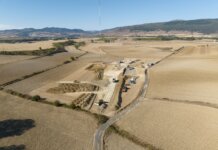Vaisala and its project partners have completed what they say is the largest-ever wind measurement campaign, making available 18 months of meteorological data from over 200 devices in the U.S. Northwest.
Funded by the U.S. Department of Energy, the Wind Forecasting Improvement Project (WFIP2), a $5 million collaborative study coordinated by Vaisala in conjunction with the National Oceanic and Atmospheric Administration (NOAA), deployed measurement technologies to assess the causes of wind speed variability and their impact on wind energy generation in complex terrain.
The three-year project, based near the Columbia River Gorge in Oregon, is now advancing into its 12-month final phase. Vaisala notes that the measurement campaign data has been made open-source to help improve the global standards of wind energy modeling and to aid further research. The partners aim to make it possible for the grid to better leverage the U.S.’ significant wind resources and expand the number of places where wind energy is not only feasible but also profitable.
During an 18-month measurement campaign, the partners covered 50,000 square kilometers of the rugged Columbia River Gorge region. Project teams deployed over 200 measurement devices of more than 24 different types, including SoDAR and LiDAR units, wind profiling radars, radiative flux systems, and microbarographs. Capable of measuring wind conditions throughout the turbine rotor layer and aloft along with other variables, such as cloud position or air temperature, the combination of devices has allowed a much deeper insight into wind activity than a conventional anemometer, the partners claim.
“Deploying cutting-edge measurement technology on an unprecedented scale has allowed our project to collect high-value data in an understudied and complex domain,” states Dr. James McCaa, manager of advanced applications at Vaisala and principal investigator for WFIP2. “The resultant data, much of it related to seldom-measured atmospheric phenomena, will enable the profound enhancement of current forecasting methodologies, with applications throughout the wind energy sector, both in the United States, as well as overseas.”
Over the coming 12-month period, project collaborators will use this dataset to upgrade existing forecasting models and will focus on 0- to 24-hour-ahead wind forecasts. These models consist of the widely deployed Weather Research and Forecasting model, which is used in both NOAA’s Rapid Refresh and High Resolution Rapid Refresh modeling systems.
McCaa adds, “It is exciting to share the project’s rich dataset publicly, which will be a valuable resource for the industry and wider research community to further its own understanding of wind behavior and modeling. We look forward to seeing the directions others take this and encourage them to share their findings with us.”
The datasets can be found here.




